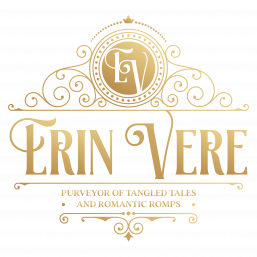“This character has no depth”
“What on earth am I going to do to jazz up my bedroom?”
“I just can’t picture the world he’s trying to build”
“Where should I go on my holiday?”
***This post contains affiliate links which will hopefully earn us enough money to buy coffee. We only link to books and media we love, and products we have used and believed in.***
Never fear! The Lotus Blossom is here. Thereby can all your questions be answered.
The Lotus Blossom technique was developed by Yasuo Matsumura, the Director of Clover Management Research in Japan. It was intended to be used in a business setting, but you can apply it to anything[1]!

How does it work? Well, much like sushi, 3D printers, and high-speed rail travel, the philosophy behind it is quite beautiful and elegant (unlike karaoke, which not even the Japanese can explain). The concept is to give multiple layers to an idea or problem, just as the lotus blossom has multiple petals and layers. As you peel back each layer, you discover more layers beneath. It is organised, manageable, calm, and at one with the universe.
Writing about the technique tends to send one into the void of tranquillity and connectedness and…ahem, see what I mean? So, I’ll dive straight into illustrating it.
Start with a truckload of paper and coloured writing implements. Sticky notes and coloured paper also work.
- Draw a 3×3 square or ‘blossom’.

It doesn’t have to be square. It can be daisy-shaped, lotus-shaped, or any other shape you like, as long as it has at least eight squares or ‘petals’ around a central square.


2. Put a description of the main idea or problem you are trying to solve in the central square. Let’s say you’re trying to develop a character, give them ‘more intensity’ (to quote my favourite movie set in Japan).
BTW, if you are not a writer, don’t give up reading yet; this technique can still work for you in other ways.
To make it easier, I’ll use a well-known character with unfathomable depth: Jane Eyre.

3. Now start brainstorming the elements that make up a person’s character: motivation, goals, hobbies, sense of humour, childhood experiences, ethnicity/culture, flaws, occupation, friend/acquaintance network, personal taste, personality according to Myers-Briggs, and even <gag> physical appearance[2]. Add these to each of the surrounding squares.

Colour-coding helps.
If you have more than nine ‘dimensions’, just add extra boxes or petals roundabout, like this:


4. Now peel back each ‘petal’ and use it as the basis for a new ‘blossom’, like this:








5. Develop each aspect by brainstorming or free associating further details, questions, or components for each blossom.

Keep expanding each box or ‘petal’ into its own lotus blossom until you have filled out every important aspect, answered any questions raised, or run out of paper and coloured pens. Here is an example of a stack of lotus blossoms I created when developing the main character for my book:
You’ll see that I was able to make connections between the different lotus blossoms. I’m still not finished with it – I just ran out of space on the page!
Tip: using Sticky Notes or cutting out the blossoms you’ve made can be useful when you see connections between different blossoms. You can then move petals or whole blossoms around so that the connections are visually apparent.
This technique is not limited to character development. It can be used for problem-solving, decision-making, world-building, or more businessy things like product development, process improvement, or to isolate a problem in a particular area. You might even end up generating ‘seeds’ of ideas that trigger even more ideas.
Here are a few examples:
World-building
This is the original lotus blossom drawn by Tolkien when world-building for Lord of the Rings[3].
Bedroom Renovation

Where Should I Go on Holiday?

Product Development
Here’s one for that artisanal gin you want to brew and sell:

In conclusion: go forth with fortitude, my creative-but-organised friends, and generate many harmonious lotus blossoms of inspiration and serenity.
And don’t forget to let us know how your lotus blossom experience went. We want to hear all about it!
[1] Except possibly mothers-in-law. I don’t think there is a technique for that.
[2] I have read TOO MANY books that take a few paragraphs to carefully describe the eye colour, hair colour/texture, eyebrow contour, mouth shape, dental work, and ear structure of a character, apparently thinking that this gives the creature ‘depth’. I plan to write an article on this in the future, but for now, think upon the following: what is the specific eye and hair colour of the beloved book characters Elizabeth Bennet or Mr Darcy (Pride and Prejudice), Pip (Great Expectations), or Jay Gatsby (The Great Gatsby)?
[3] Not really. But it would’ve worked.






Why have I never come across this before?
We look forward to you sharing your Lotus experience with us 🙂
I’ve only ever seen the Lotus Blossom Technique applied in ‘business’ settings like product development. While writing a module about innovation for a management course, it occurred to me that this technique had many possible applications outside the business environment. I searched the Interweb but could not find any articles with that approach. So, in theory, I may have had an original idea!